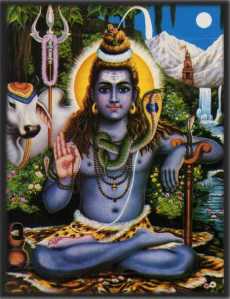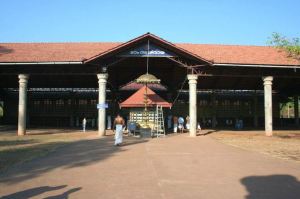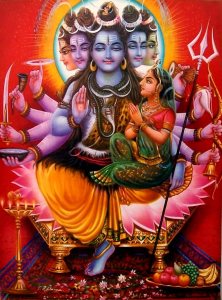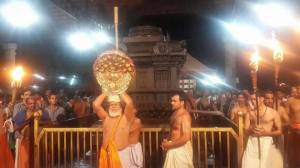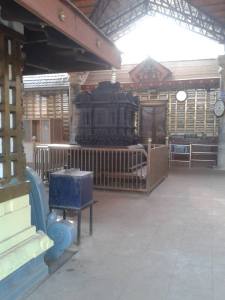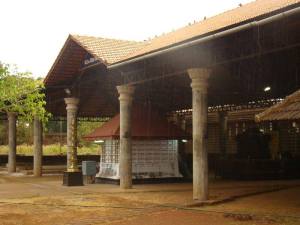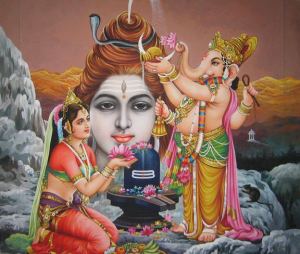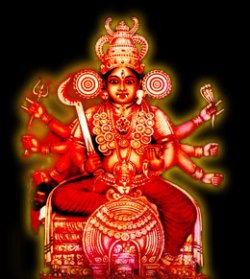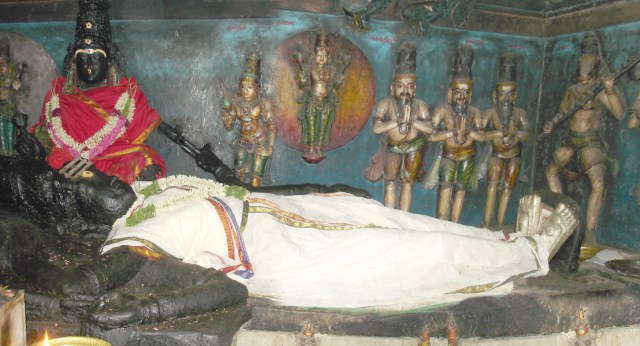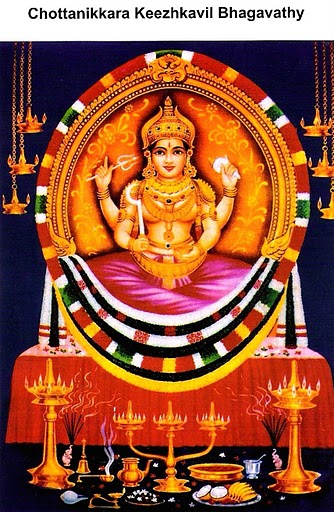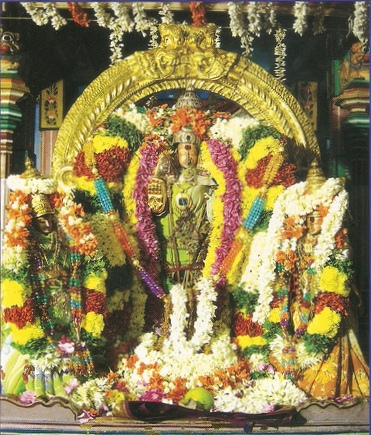Sri Parvathavarthini sametha Sri Ramanathaswamy

sutAmraparNIjalarAshiyoge nibadhya setuM vishikhairasa.nkhyaiH |
shrIrAmachandreNa samarpitaM taM rAmeshvarAkhyaM niyataM namAmi ||
Importance of Rameshwaram
Taking the Ganga water to Rameshwar, is considered as a very auspicious and pious thing to do after the pilgrimage of the four holy shrines. After taking a holy bath in Ganga water, the holy water is carried and offered to Lord shiva of Rameshwaram. After this a little sand from here is carried to Ganga and immersed there. Completing this ritual is believed to make one’s pilgrimage complete and successful.
On the southern seaside of India, Rameshwar sea shrine is located.
In classics like the Skandha Purana, Shivapurana etc., Rameshwar is shown as a very important place. The story of Rameshwara goes like this:
Puranam of Rameshwar Jyothirlingam
After Sita’s abduction, Ram wandered in the jungles looking for her. While doing so, he met Sugriva and made friends with him. Later with the help of special messenger Sri Hanuman, he found out where Sita was taken. Then Rama prepared an army to invade Ravana’s empire and reached the southern seashore. He did not have any means of crossing the sea. Lakshman and Sugriva saw Rama, who is a Shiva devotee in great anguish and could do nothing. But Ravana received some special boons from Lord Shiva. Rama was aware of this and therefore, his fears could not be set at rest. In the mean time, Rama was full thirsty. Just as he was about to drink water, he remembered that he was yet to perform Shiva pooja. He immediately made a Prathiv Linga and worshipped it with sixteen methods, i.e., Shodasopachar Vidhis.
Ramji prayed to Lord Shiva ardently and soulfully, and sang songs of Lord Shiva’s praise in a loud voice. He danced and made the sounds of “Aagad bam bam”. This pleased Lord Shiva immediately and instantly appeared before Rama and told him that could ask for any boons and that he would grant them. Ram showed a lot of care, affection and love to Lord Shiva and prayed and paid obeisance. Rama said “If You want to grant me my wishes, please stay on this earth for the sake of all make it holy” Shiva granted the same by saying “Evamastu” meaning “so be it”. He thus stayed there and came to be known as Rameshwara, in the form of a Shiva Linga and became popular.
With the blessings of Lord Shiva, Rama killed all the demons including Ravana and became victorious. Any one who takes a Darshan of the JyotirLinga at Rameshwar and sprinkles the holy water of Ganga, attains salvation, Kaivalya Moksha or Nirvana.
Specialities of Rameshwaram
The place where the JyotirLinga is located, a large and expansive temple has been built. It is famous in the world as a typical architectural example. In the Ramnad district of Tamilnadu, this temple is situated on a big island of sand. It is worth seeing and is a wonderful experience. The main entrance of the temple tower has many storeys and stands tall. Its structure carvings, statutes and the peaks make people dumb founded. The grandeur of the Lord is really felt here. The human weakness for being narrow-minded is automatically removed and they feel their horizons broadened.
On the tall stone pillars of temple, beautiful carvings can be seen. Elephants with their trunks raised are seen. The four sides of the temple are enclosed by strong stone walls. They are 650 ft. and 12ft. wide and tall respectively. This wonderful temple built on the sand island, is a work of great art and very impressive.
Near to a gold plated pillar, a river is carved on a monolithic stone of 13 feet high and a foot wide. This indeed is a typical example of beautiful sculpting.
Near the main temple of Rameshwar, there is a separate temple for Parvati known as Parvatavardhini temple. Besides this, there are temples of Santana Ganapati, Veerabhadra Hanuman, navagrahas, etc., At a distance of about nearly 2 kilometers from the main temple, there is Gandhamaadhan mountain. In spite of being a sandy area, it is very green with a variety of flora. This is the Nandanavan of Rameshwar.
This island shrine consists of 24 odd holy water sources like Rama teerth, Sita Kund, Jata Teerth, Lakshman Teerth, Kapi Teerthas, Brahmakund, Galawa teerth, Mangala teerth, Kodandaram teerth, Pandav teerth etc., The waters at all these places is sweet and has a taste of its own. Every teerth has a typical story attached to it. Devotees take Darshan and feel purged by doing so.
Everyday, right from 4am till 10pm devotees keep coming to the temple and prayers go on. After the Harati at night, the Lord is made to sleep in a Golden swing i.e., the Bhoga statutes of Shankara and Parvati put to bed.
During Mahashivaratri and on the 15th day in the month of Ashadha (Rainy season) a Badatra mela/fete takes place, with great festivity. Devotees flock here on these days and at all times right from Nepal and entire India. People in a variety of dresses, attired differently come here.
sambandhar, and appar have sung padhikam (1) on the Lord of Rameshwaram.
13.097798
77.394090
